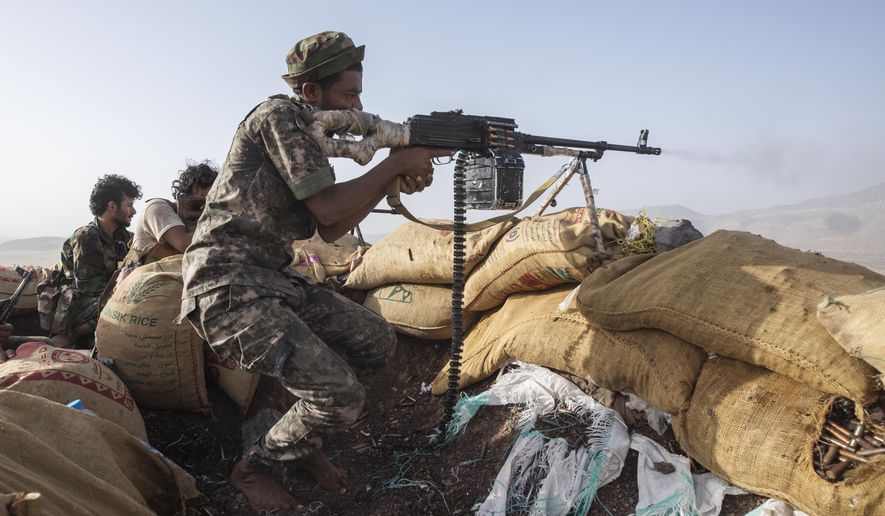CAIRO — Forces of Yemen’s internationally recognized government and their United Arab Emirates-backed allies swept through a strategic province, forcing Houthi rebels out of its second-largest district, officials said Wednesday.
The development in Marib province is another setback for the Iran-backed Houthis, who for a year attempted to take control of the oil-rich province. Their offensive crumbled when the UAE-backed Giants Brigades helped reclaim the nearby Shabwa province earlier this month before advancing in Marib under air cover from the Saudi-led coalition.
Government forces and the Giants retook the district of Harib and its center south of Marib city after nearly two weeks of fighting, pushing their way to the nearby district of Juba, said Brig. Abdou Megali, a military spokesman. The Houthis had taken the two districts last year as part of their offensive on Marib.
Fighting also raged between government forces and the Houthis elsewhere, including in the provinces of Jawf and Taiz, Megali added.
The Giants posted footage purportedly showing their forces roaming through what they said was the center of Harib. Other footage showed fighters on armored vehicles speeding in what they said were mountainous areas overlooking the district.
Two other military officials from inside the coalition also said the district had been taken. They spoke on condition of anonymity because they were not authorized to speak to media.
In a decree for local authorities, Marib’s provincial Gov. Sheikh Sultan al-Aradah ordered the restoration of all services in the district, which he said the Houthis disrupted when they took it in September.
Houthi spokespersons did not immediately respond to requests for comment on the retaking of the district.
The recent escalation of ground fighting has coincided with intense Houthi cross-border attacks on Saudi Arabia and the UAE, as well as heavy coalition airstrikes on the rebel-held Yemeni capital, Sanaa.
The Houthi military media reported dozens of coalition airstrikes on Sanaa and elsewhere in Yemen over a 24-hour period. The rebels said there were at least 20 airstrikes overnight on Sanaa alone.
The ongoing battlefield setbacks prompted Brig. Yahai Sarei, a Houthi military spokesman, to threaten further attacks on the UAE.
The Houthis have made Marib city their main target for the past three years. They first retook town after town in the neighboring province, before finally reaching the outskirts of the city itself. But their hopes of capturing it diminished when the UAE-backed forces joined the clashes, shifting the tide of the conflict.
The prolonged battle for Marib, however, has been costly for both sides. Thousands of fighters were killed, mostly Houthis who were easy targets for coalition airstrikes in the sprawling desert in central Yemen.
U.S. special envoy for Yemen Tim Lenderking on Wednesday urged the warring sides to de-escalate and engage in talks to settle the conflict.
“The recent escalation of violence in the region poses a threat to all,” he said following talks in Muscat with Omani Foreign Minister Badr Albusaidi.
Over the past year, efforts by the U.N. and President Joe Biden’s administration have failed to bring the two sides to negotiations as the Houthis pressed their Marib offensive to gain leverage in future peace negotiations.
The war in the Arab world’s poorest country began in 2014, when the Houthis took Sanaa and much of northern Yemen, forcing the government to flee to the south, then into exile in Saudi Arabia. The Saudi-led coalition, backed at the time by the U.S., entered the war months later to try to restore the government to power.
The conflict has since become a regional proxy war that has killed tens of thousands of civilians and fighters. The war also created the world’s worst humanitarian crisis.




Please read our comment policy before commenting.